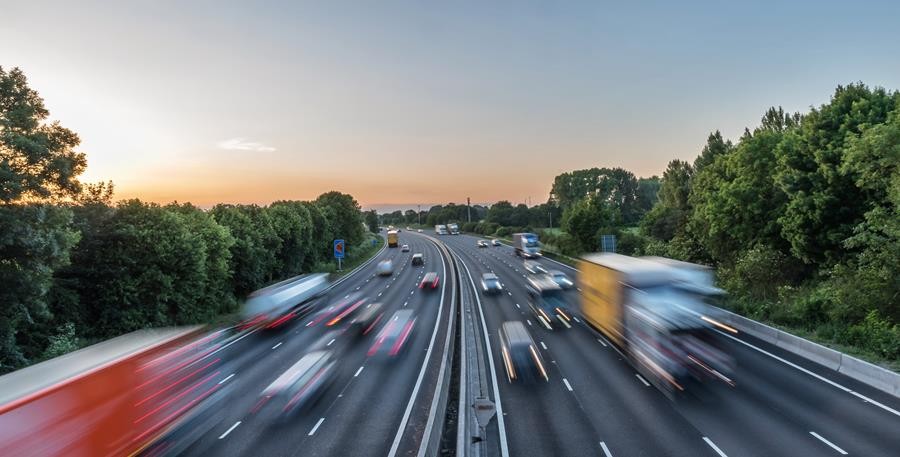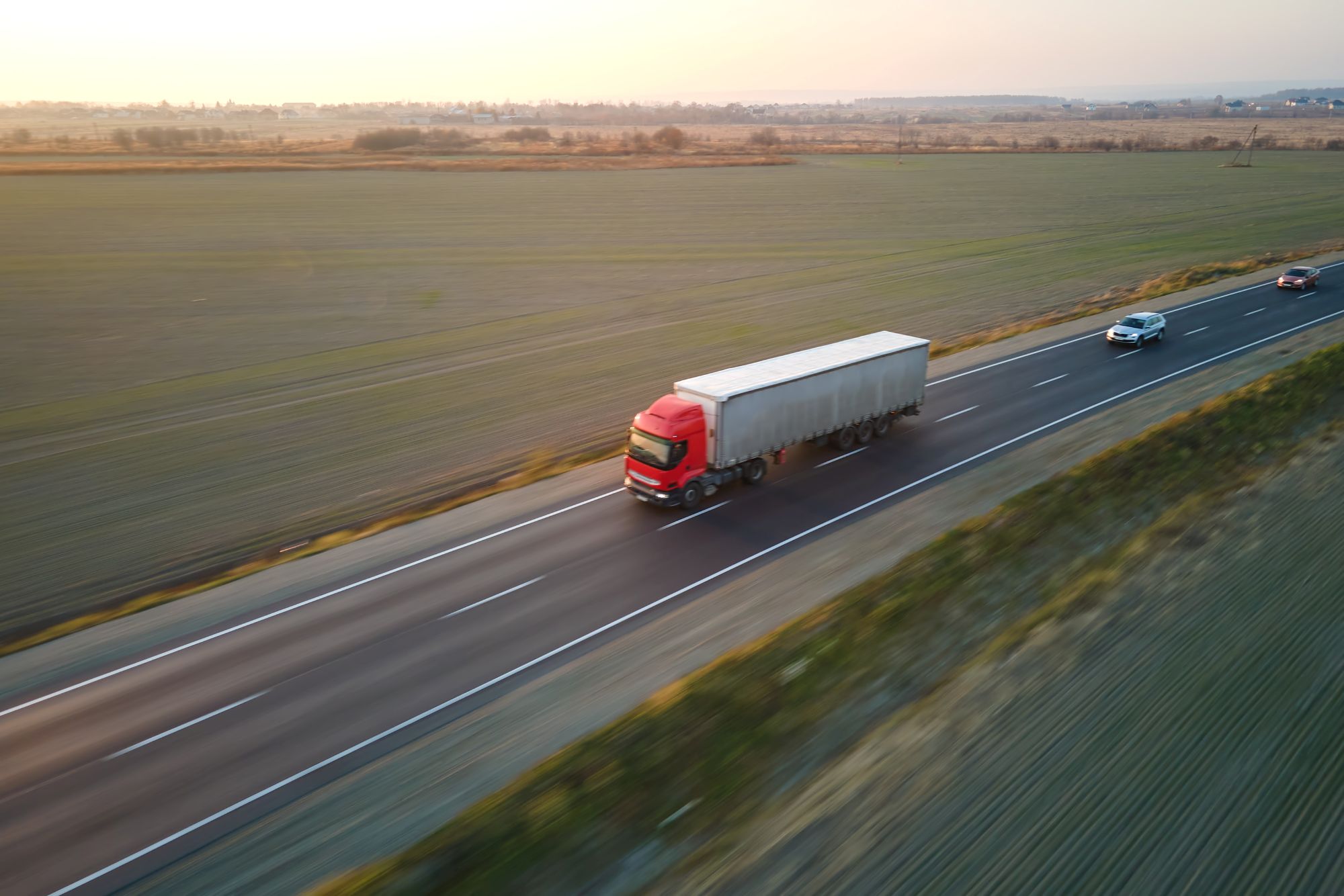
Susie Jones
Vejen til bæredygtighed: Den europæiske emissionsudfordring inden for transportsektoren
Oprettet: 08.08.2024
•
Opdateret: 08.08.2024
En rapport fra 2024 fra Clean Technica afslørede, at over 25 % af vejtrafikkens udledninger kommer fra transportsektoren i Europa - med tunge køretøjer, der er ansvarlige for 85 % af udledningerne (busser udgør resten).
Med den nuværende hastighed vil transportsektoren alene udgøre næsten halvdelen af Europas drivhusgasudledninger i 2030 - Europas transportudledninger er fortsat med at stige med mere end en fjerdedel siden 1990. Udledningen i hele økonomien er faldet - men siden toppen i 2007 har transportsektoren dekarboniseret mere end tre gange langsommerer end resten af økonomien.
Hvad er årsagen til den stigende CO2-udledning i transportbranchen?
Siden udbredelsen af e-handel og hjemmeleveringstjenester er efterspørgslen efter flere lastbiler på vejene steget markant. Derfor har den øgede efterspørgsel resulteret i en stigning i CO2-udledningen inden for transportbranchen.
En rapport fra [Clean Technica] (https://cleantechnica.com/2024/05/13/eu-wisely-stiffens-road-freight-passenger-emissions-guidance/) om indenlandsk godstonnage på tværs af forskellige transportformer (vej, jernbane og vand) afslørede, at vejgodstransport var mere dominerende i Europa end jernbane og vand sammenlignet med andre geografiske områder (USA og Indien). Selv om Kina er mere afhængig af vejtransport, viste rapporten, at landet brugte omkring 600.000 elektriske lastbiler til at levere varer.

Hvilke planer er der i Europa for at reducere CO2-udledningen?
Europa-Parlamentet vedtog [den europæiske klimalov] (https://climate.ec.europa.eu/eu-action/european-climate-law_en#:~:text=The%20European%20Climate%20Law%20writes,2030%2C%20compared%20to%201990%20levels.) for at tackle den stigende CO2-udledning. Som en del af denne lov er EU's mål om at reducere nettoudledningen af drivhusgasser inden 2030 blevet øget til mindst 55 % - hvilket gør klimaneutralitet inden 2050 juridisk bindende.
I maj 2024 godkendte EU-landene en lov, der skal reducere lastbilers CO2-udledning. Den nye lov vil kræve, at nye tunge køretøjer, der sælges i EU fra 2040, skal være emissionsfrie - samtidig med at den gennemtvinger en 90 % reduktion af CO2-udledningen fra nye tunge køretøjer inden samme år. Producenterne skal sælge en stor mængde helt CO2-frie lastbiler - f.eks. el- og brintbiler - for at opveje det resterende salg af CO-udledende køretøjer.
Hvad kan flådeadministratorer gøre for at reducere CO2-udledningen?
Flådechefer kan træffe foranstaltninger for at reducere deres CO2-udledning:
Hård opbremsning, hurtig acceleration og tomgang kan øge brændstofforbruget og udledningen af drivhusgasser - Selvom det kan være en udfordring at overvåge chaufførernes adfærd, kan AI-teknologi give løbende feedback til chauffører og flådeadministratorer. Læs mere om, hvordan [AI kan have en positiv indvirkning på bæredygtigheden] (https://www.linkedin.com/pulse/ai-its-impact-sustainability-haulage-industry-snap-account-e9o9e/?trackingId=uKlPhDPHQcOVRjFkVc1iFQ%3D%3D) i transportbranchen.
Flåder med ældre køretøjer kan skifte til HVO (Hydrotreated Vegetable Oil), brint eller el-drevne lastbiler for at reducere udledningen betydeligt. Flådecheferne skal dog overveje, hvor langt køretøjer, der kører på alternative drivmidler, kan køre, og hvad det koster.
SNAP Account](https://snapacc.com/) gør det muligt for flådechefer at reducere deres omvejskørsel - med over 600 servicepartnere til rådighed for SNAP Account-kunder kan flådechefer planlægge overnatninger for deres chauffører på ruten.
Er der infrastruktur til at oplade elektriske lastbiler?
Ifølge en [PwC-undersøgelse] (https://www.strategyand.pwc.com/de/en/industries/transport/the-dawn-of-electrified-trucking.html) vil en tredjedel af alle lastbiler i Europa være elektriske i 2030. Da flådevirksomheder tager skridt i retning af elektrificering, skal lastbilstoppesteder i hele Europa være i stand til at imødekomme efterspørgslen efter elektriske ladestationer.
Det kommer til at koste mange rastepladser og servicestationer at etablere infrastrukturen. Men de, der allerede har opladere til elbiler, er godt placeret til at drage fordel af fremtidige bølger af elektriske lastbiler. I 2030 vil antallet af offentlige ladestationer i Europa være vokset til over [3.600] (https://www.2win.eu/blog/electric-trucks/) - EU har fremsat en ambitiøs lov om opladning med forordningen om infrastruktur for alternative brændstoffer (AFIR). AFIR planlægger at udstyre hovedvejsnettet med opladningspuljer for hver 60 km - hvilket giver nok opladningsenergi og brintkapacitet til, at 9 % af lastbil- og busflåden kan være emissionsfri i 2030.
Hvilket europæisk land har den største CO2-udledning?
I 2021 var Tyskland, Frankrig og Italien ansvarlige for den højeste samlede udledning af drivhusgasser (GHG) - fra [375.000 til 740.000 ktons CO2] (https://ccpi.org/which-european-countries-are-the-worst-climate-polluters-and-why/). Men lande med større befolkninger producerer mere drivhusgasudledning - derfor giver det et forvrænget billede at se på den samlede drivhusgasudledning.
Hvis man ser på et upartisk billede af udledninger, ser det anderledes ud - Luxembourg, Irland og Tjekkiet havde de højeste udledninger pr. indbygger i EU i 2021.
Hvad er den mest miljøvenlige måde at transportere varer på?
Transport af varer via jernbane er en af de reneste transportformer, men den giver også andre fordele:
Reducerer trængslen på vejene, hvilket bidrager til bedre luftkvalitet.
Jernbanen giver en hurtigere måde at transportere varer på og fjerner tunge trafikale forhindringer.
Lastbiler med alternative brændstoffer er en anden miljøvenlig måde at transportere varer på. Hydrotreated Vegetable Oil (HVO) kan med det samme reducere op til 90 % af drivhusgasemissionerne sammenlignet med standarddiesel i hele produktets livscyklus. Certas Energy HVO står bag overgangen til et renere alternativ - og hjælper virksomheder med at nå deres bæredygtighedsmål og tage meningsfulde skridt i retning af en netto-nul fremtid.



